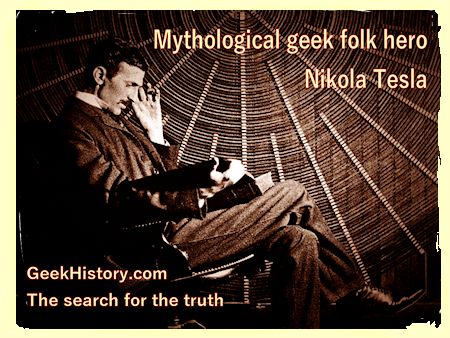
The lives of Nikola Tesla and Thomas Edison, and the people they interacted with during their lifetimes, is an interesting story in defining a geek. Nikola Tesla and Thomas Edison were two of the most prolific inventors of the twentieth century.
Tesla came to America looking for Edison and hoping to earn his respect, and show him his inventions in the field of AC (alternating current). The arrogant Edison brushed away Tesla as an intelligent man with ideas that weren't practical, because Edison favored the competing system DC (direct current).
Tesla, jilted by Edison, would go out on his own to prove his point. Years later Tesla would team up with Edison's rival, George Westinghouse, and together they would defeat Edison in a great science and technology feud known as The War of Currents.
In the battle of the two crazy mad scientists, Tesla would be the ultimate victor in the battle of good versus evil, defeating his rival, Edison. Much of what is said is exaggerated for the sake of a good story. The myths and legends grow stronger every day on the internet.
The search for the truth
Many history books and museums tell us Thomas Edison was greatest inventor of all times with a thousand different patents for a variety of inventions. Nikola Tesla has become a modern day cult hero on the Internet. In researching Nikola Tesla you will find many people who are fanatics in their extreme zeal to promote the legendary stories surrounding the legacy of Tesla, claiming Edison and others took credit for many inventions that were created by Tesla.
The goal of Geek History is to be fanatic at finding the truth. There are so many myths and legends about Tesla, we could write an entire chapter of debunking all the misinformation. For the sake of setting the record straight in the battle of Edison versus Tesla we though we needed to at least address some of the major points of misinformation and put some things into perspective.
The often quoted myth states that Tesla died in 1934 a broke and broken old man because Edison stole Tesla's ideas. The statement becomes the mantra to make Tesla the patron saint of geeks and a martyr. The statement perpetuates many myths about the life of Tesla being one of hardships and failures.